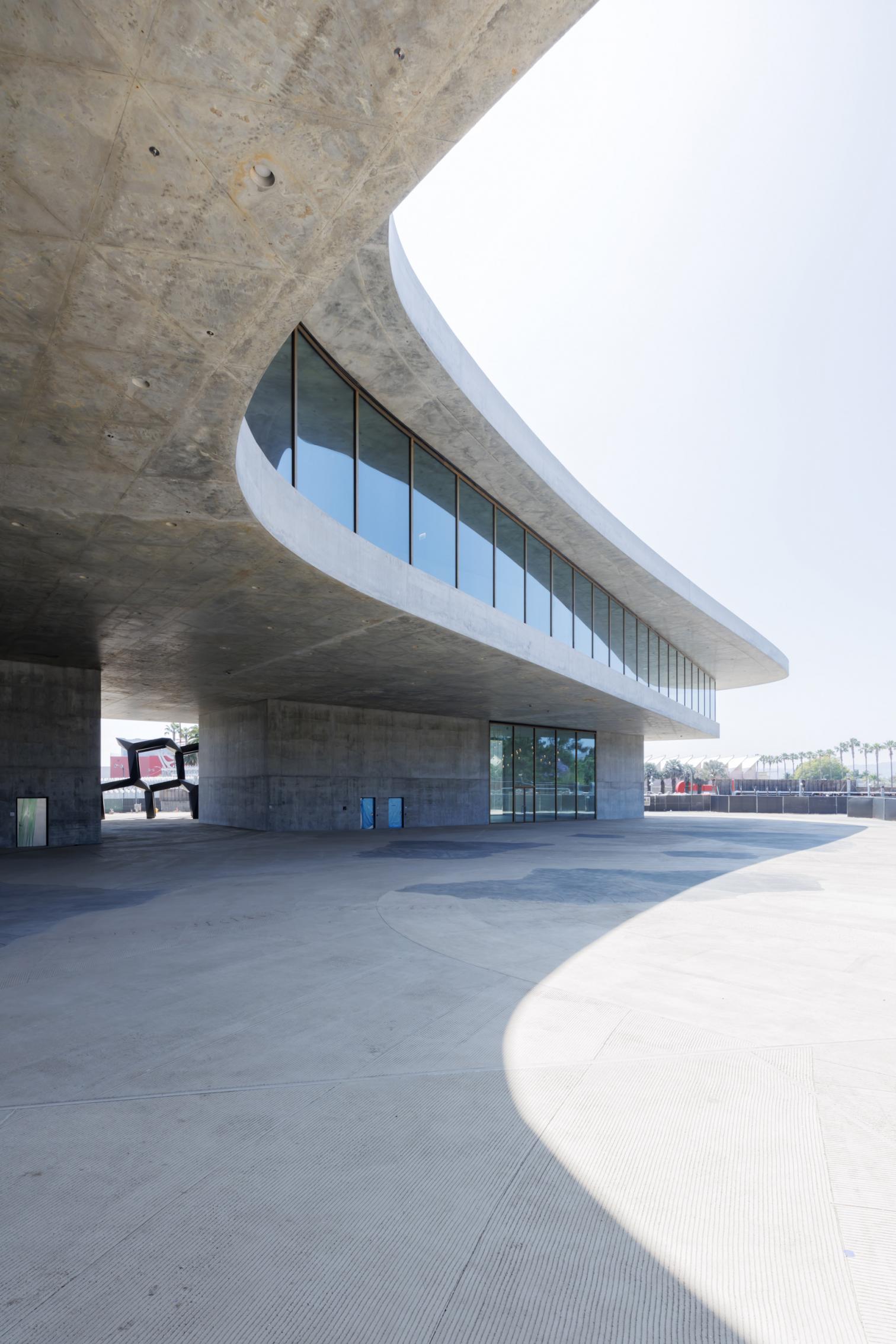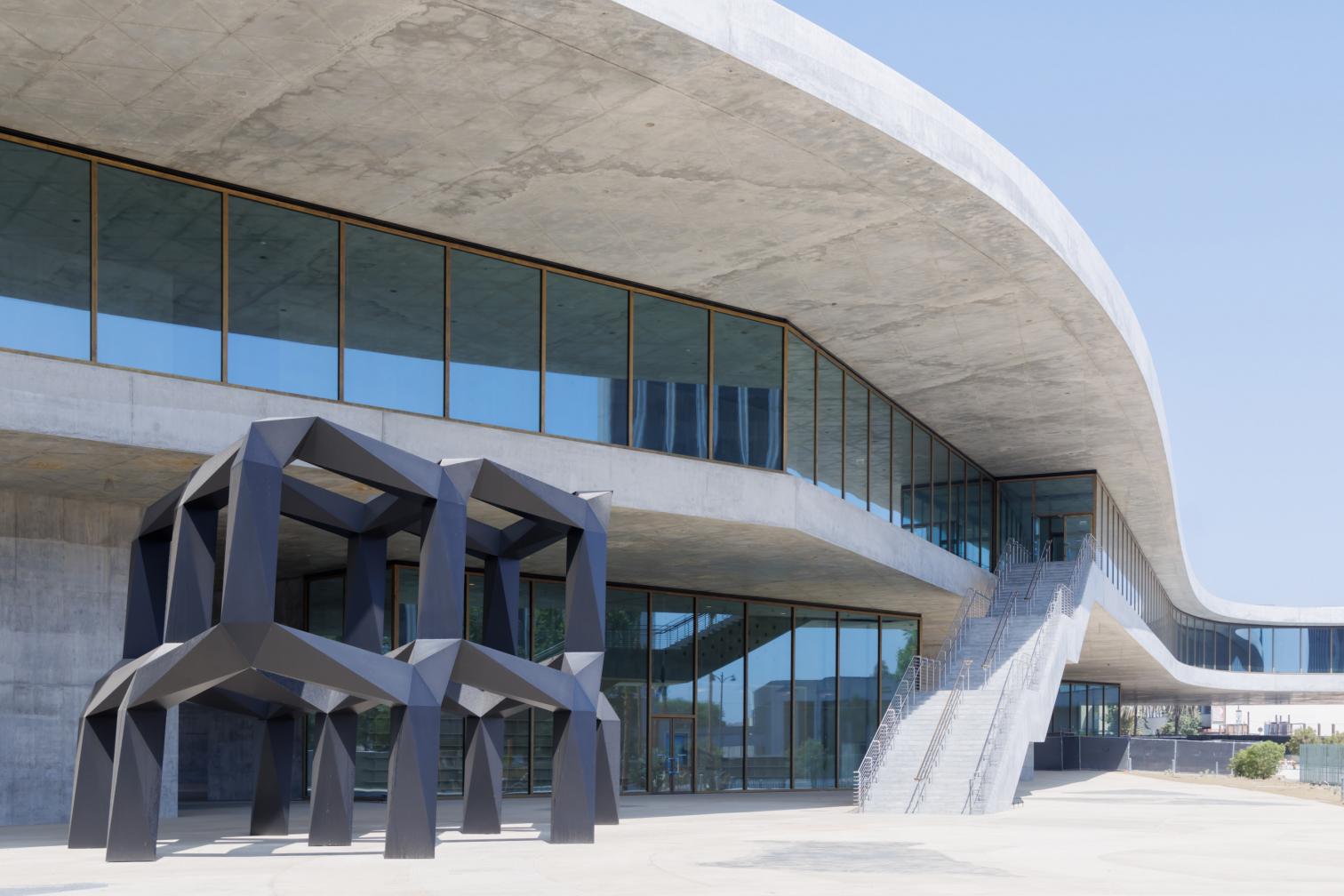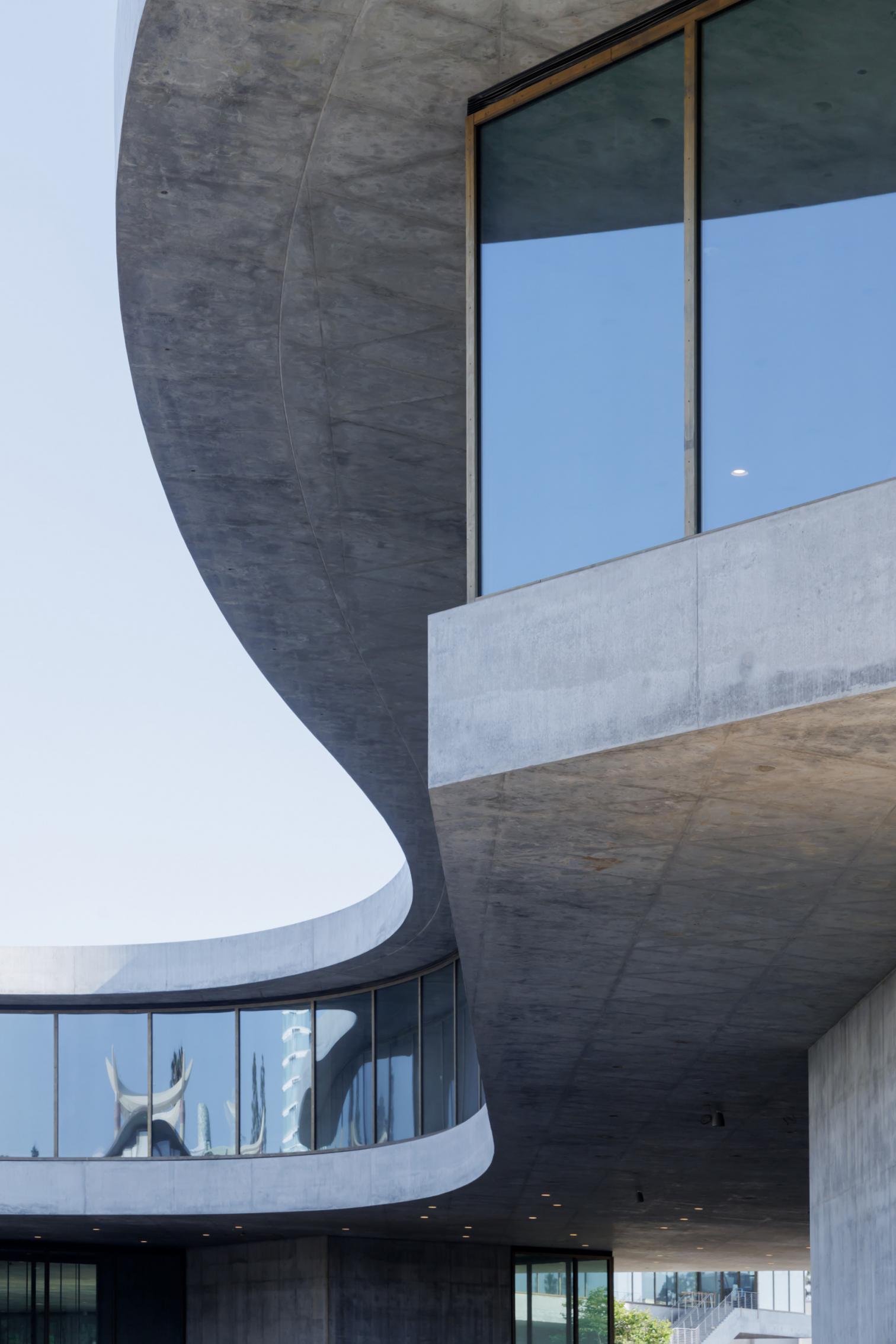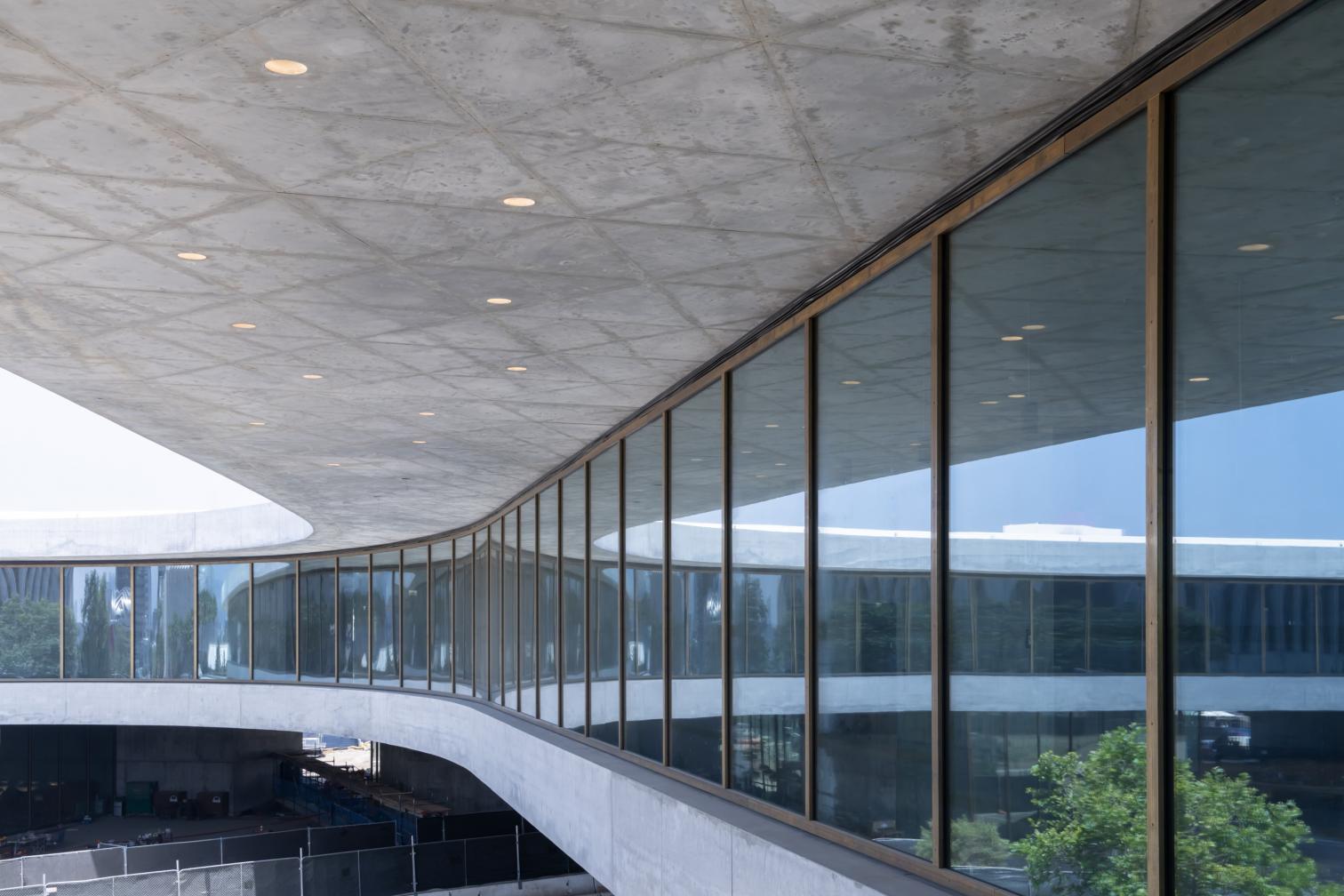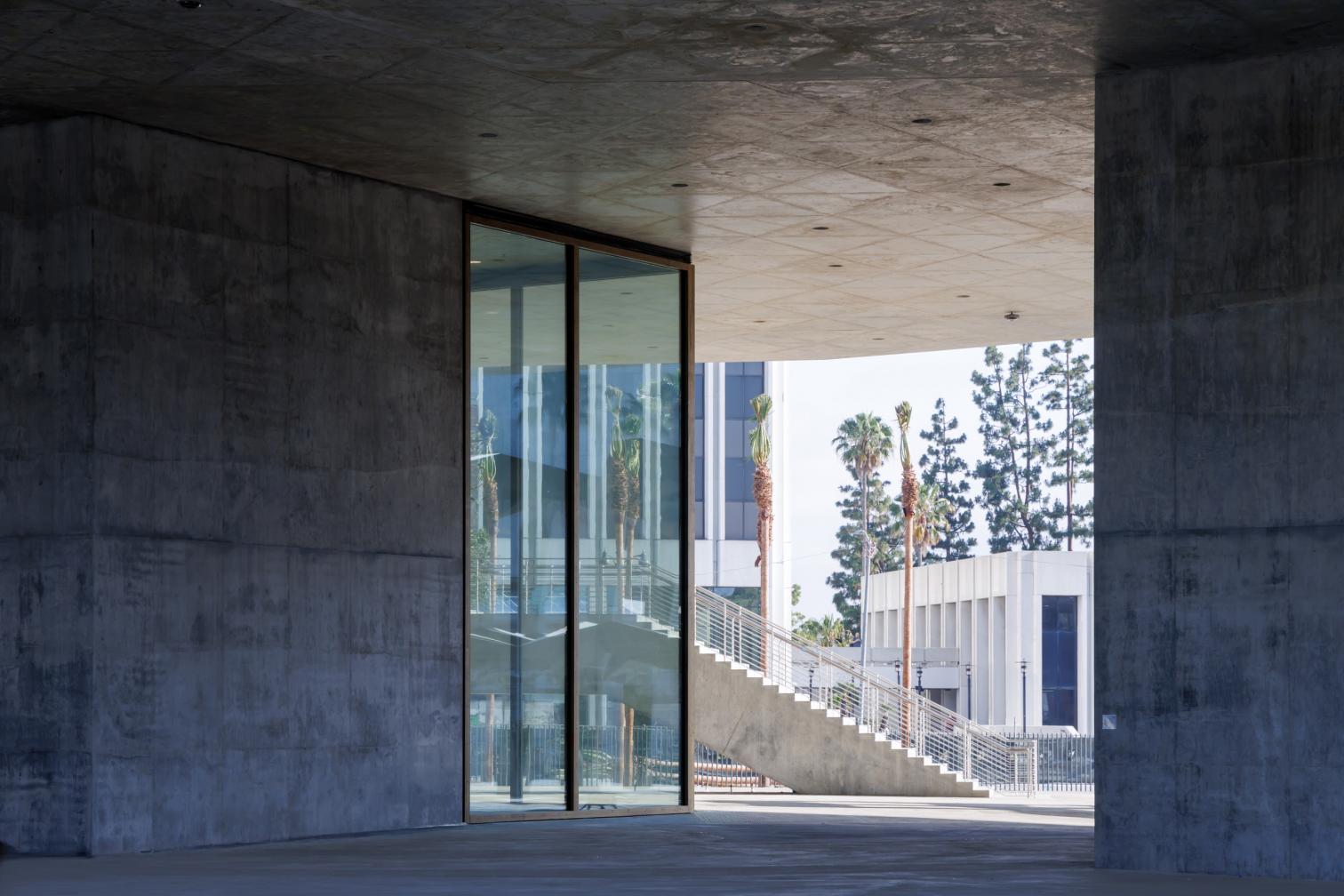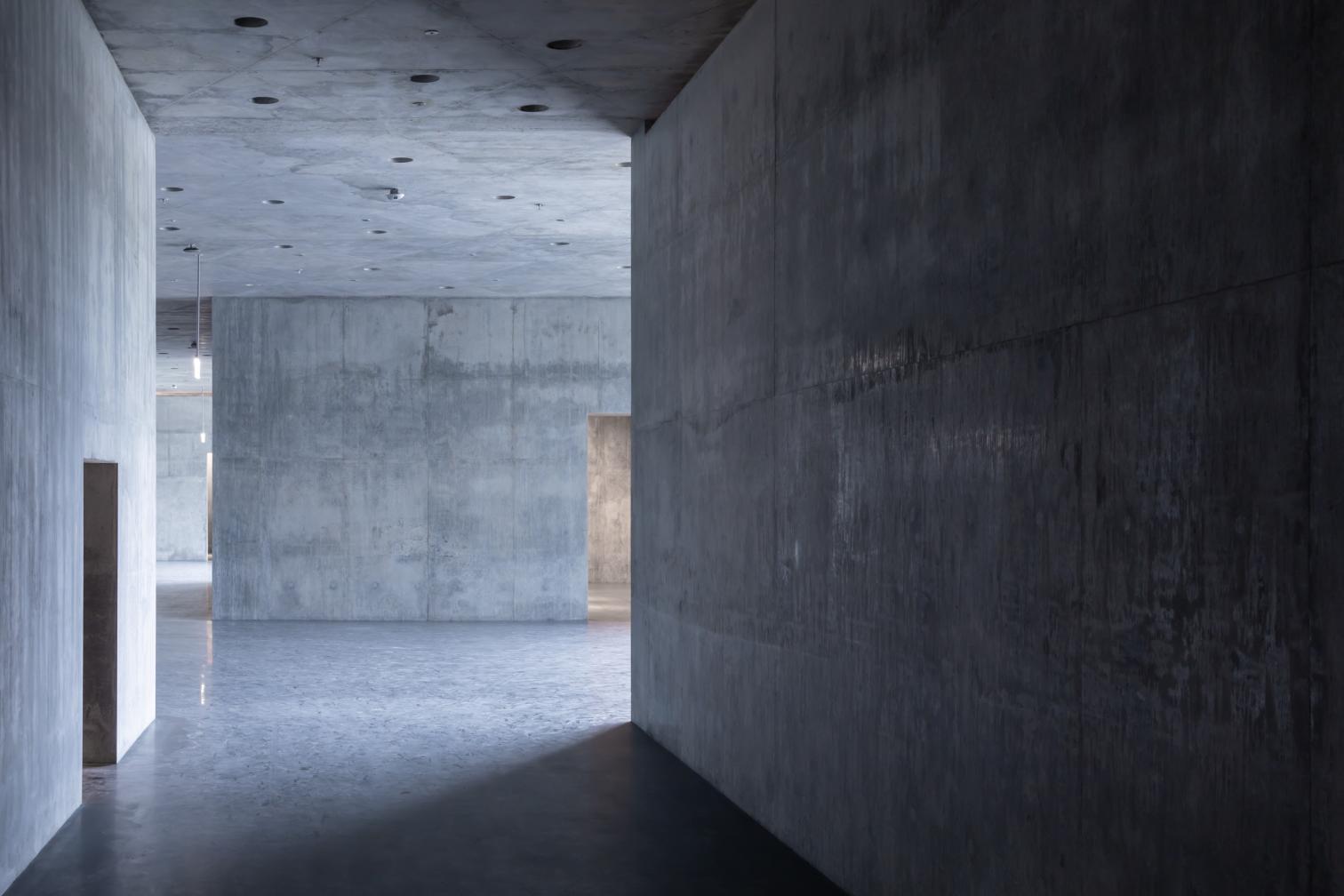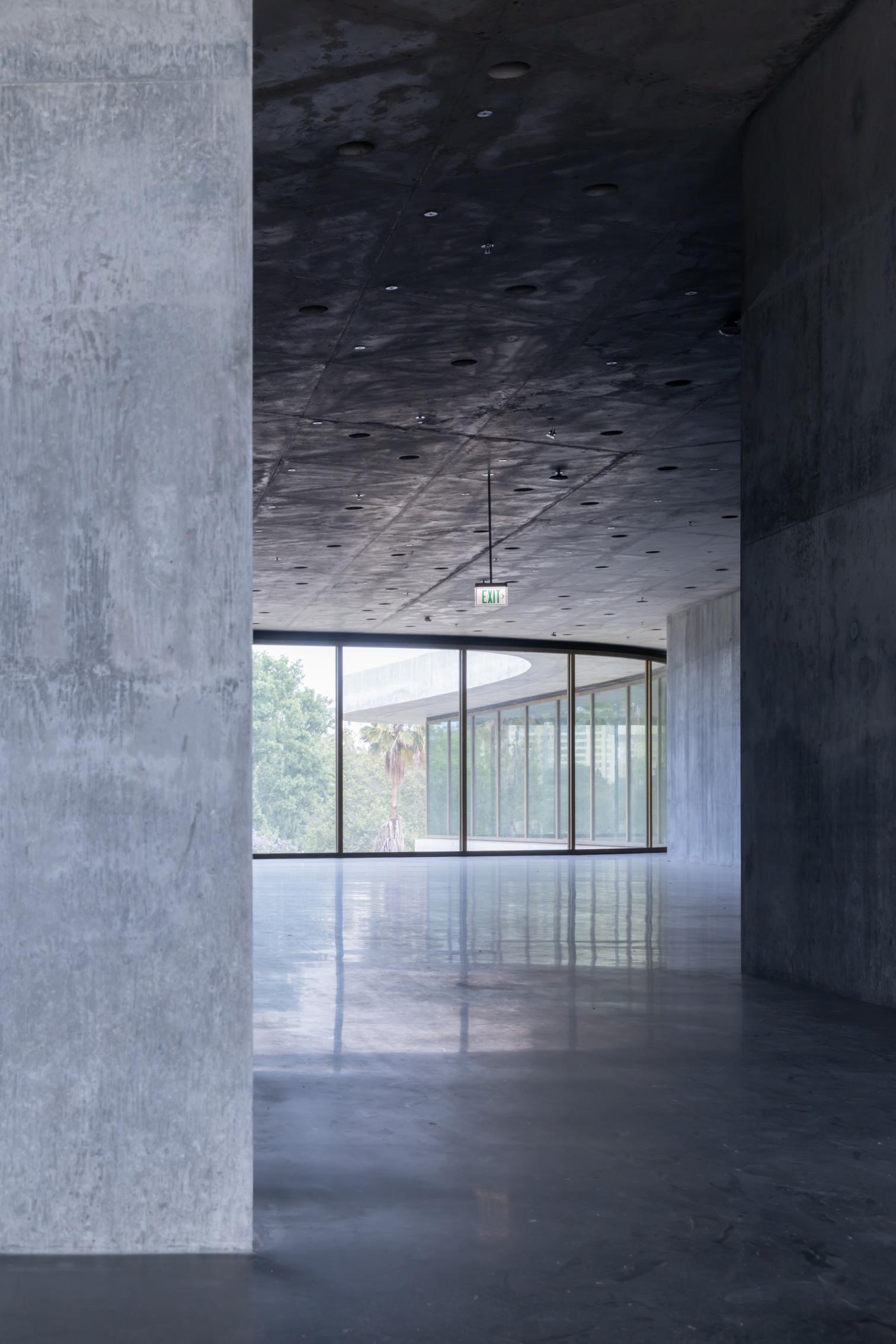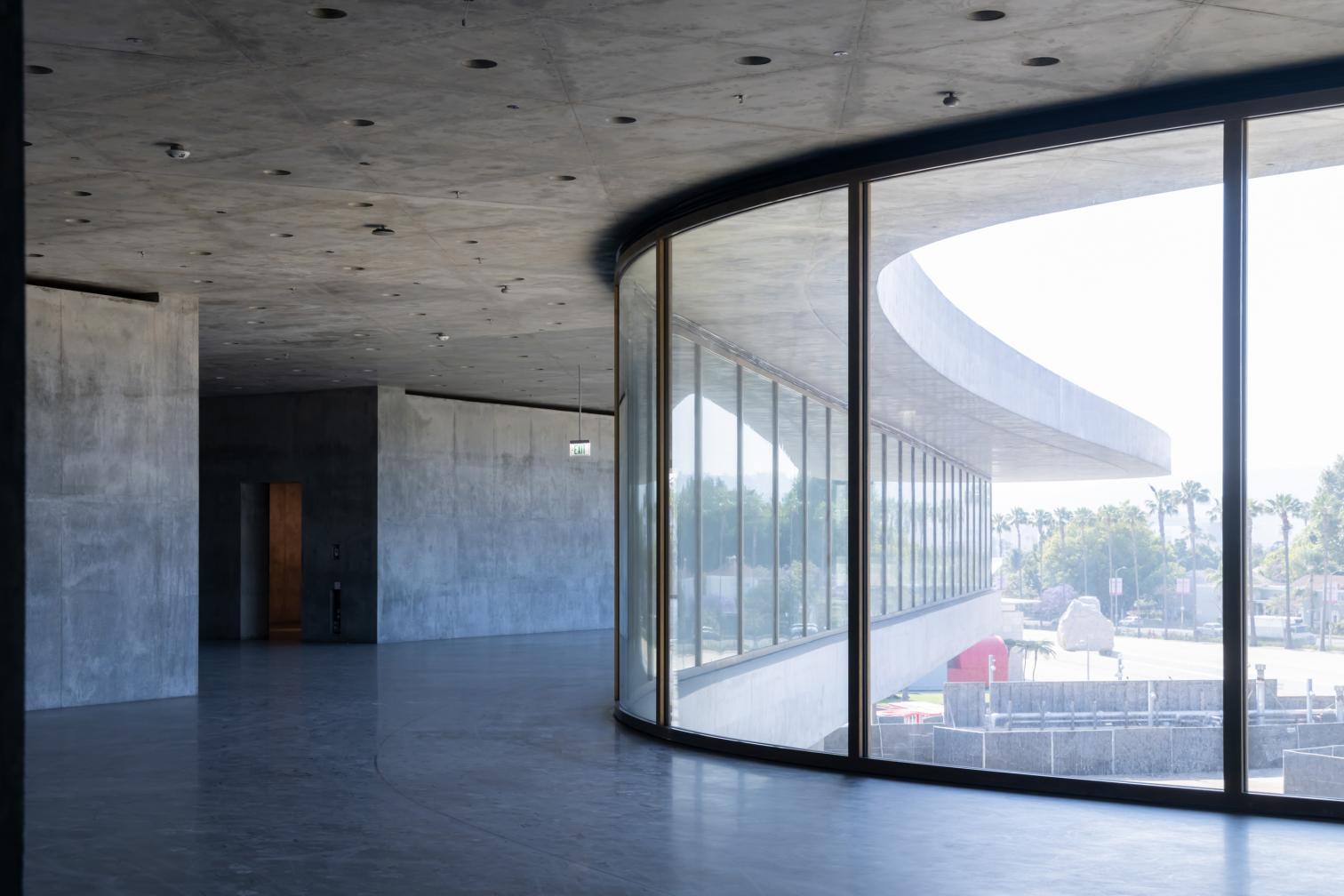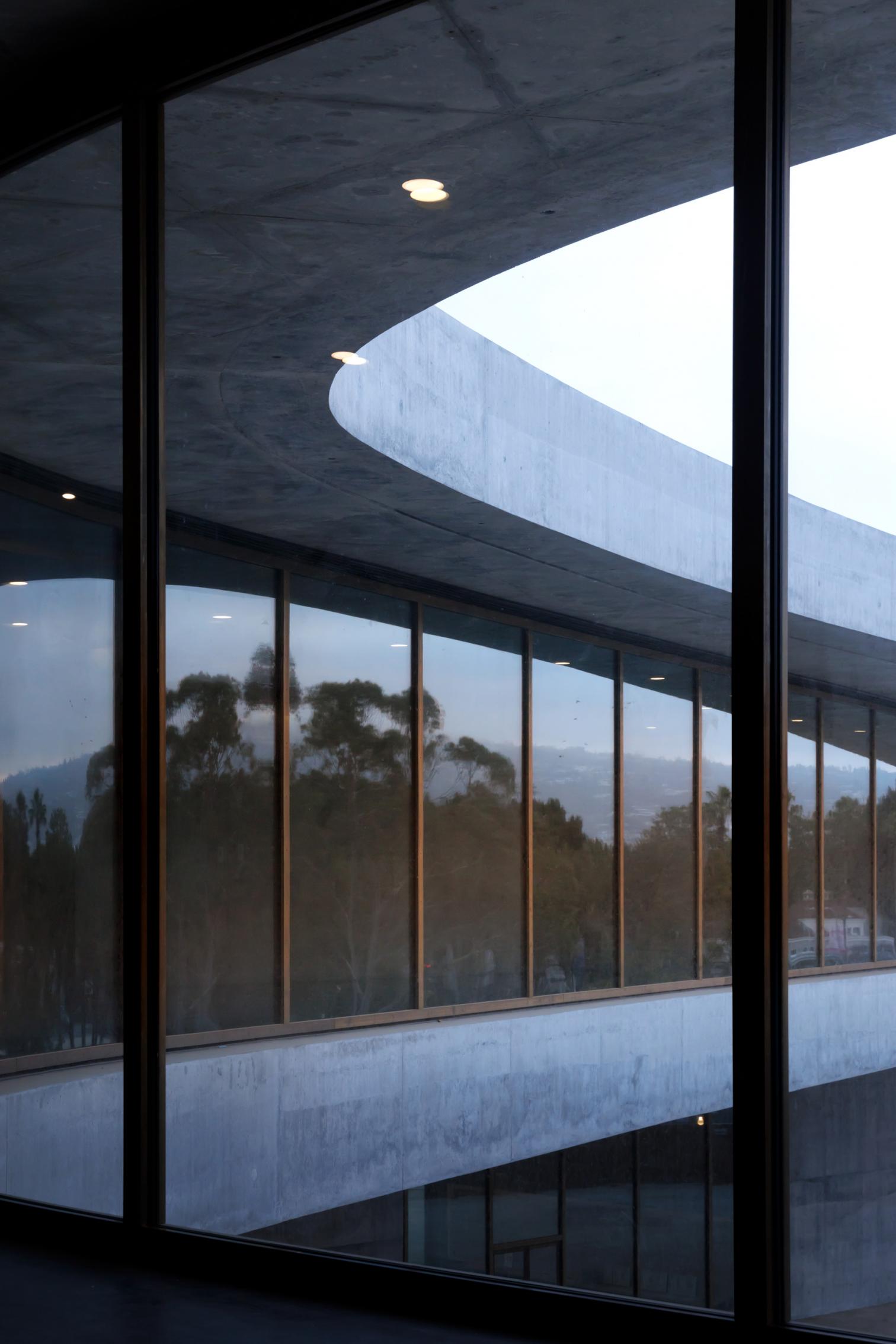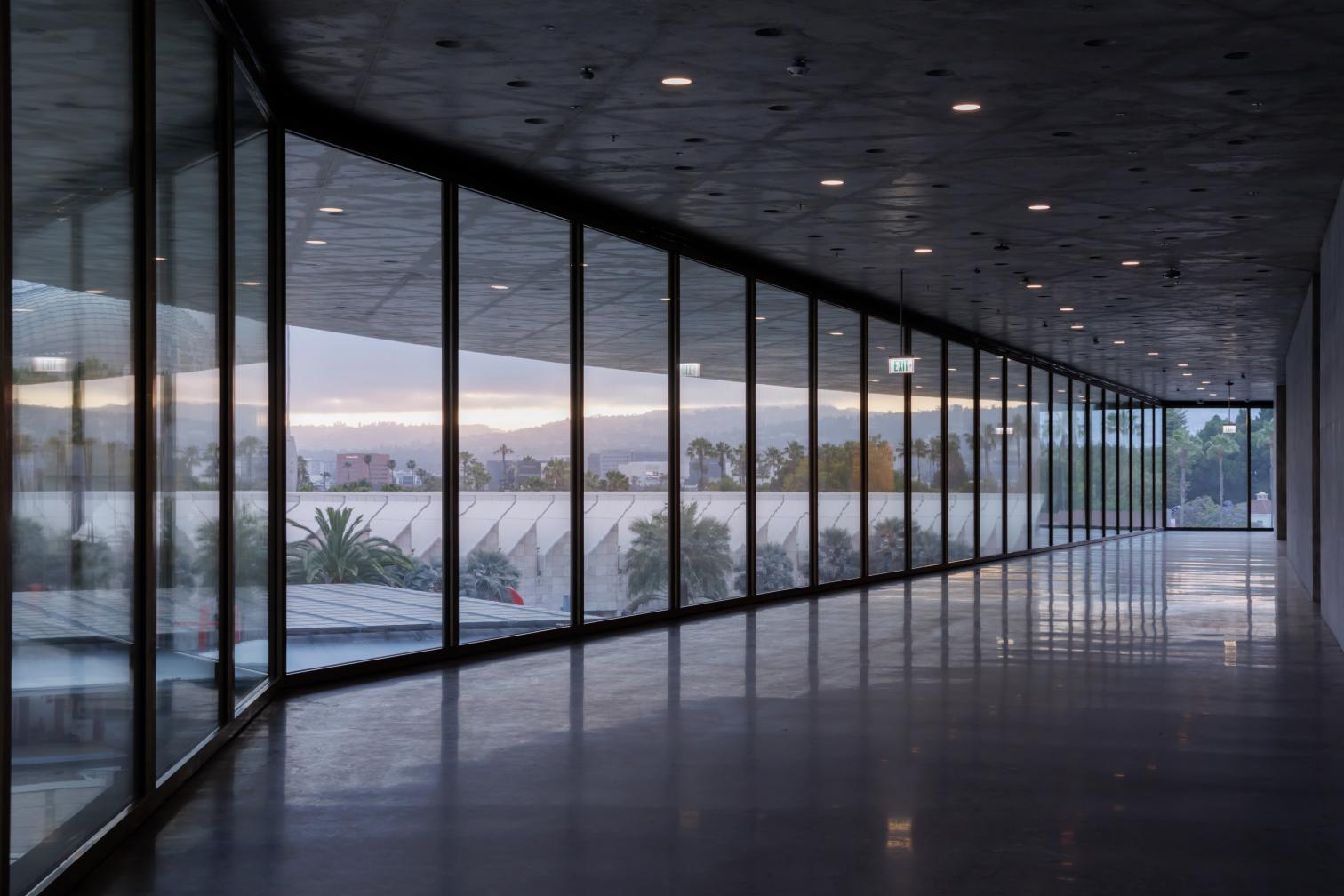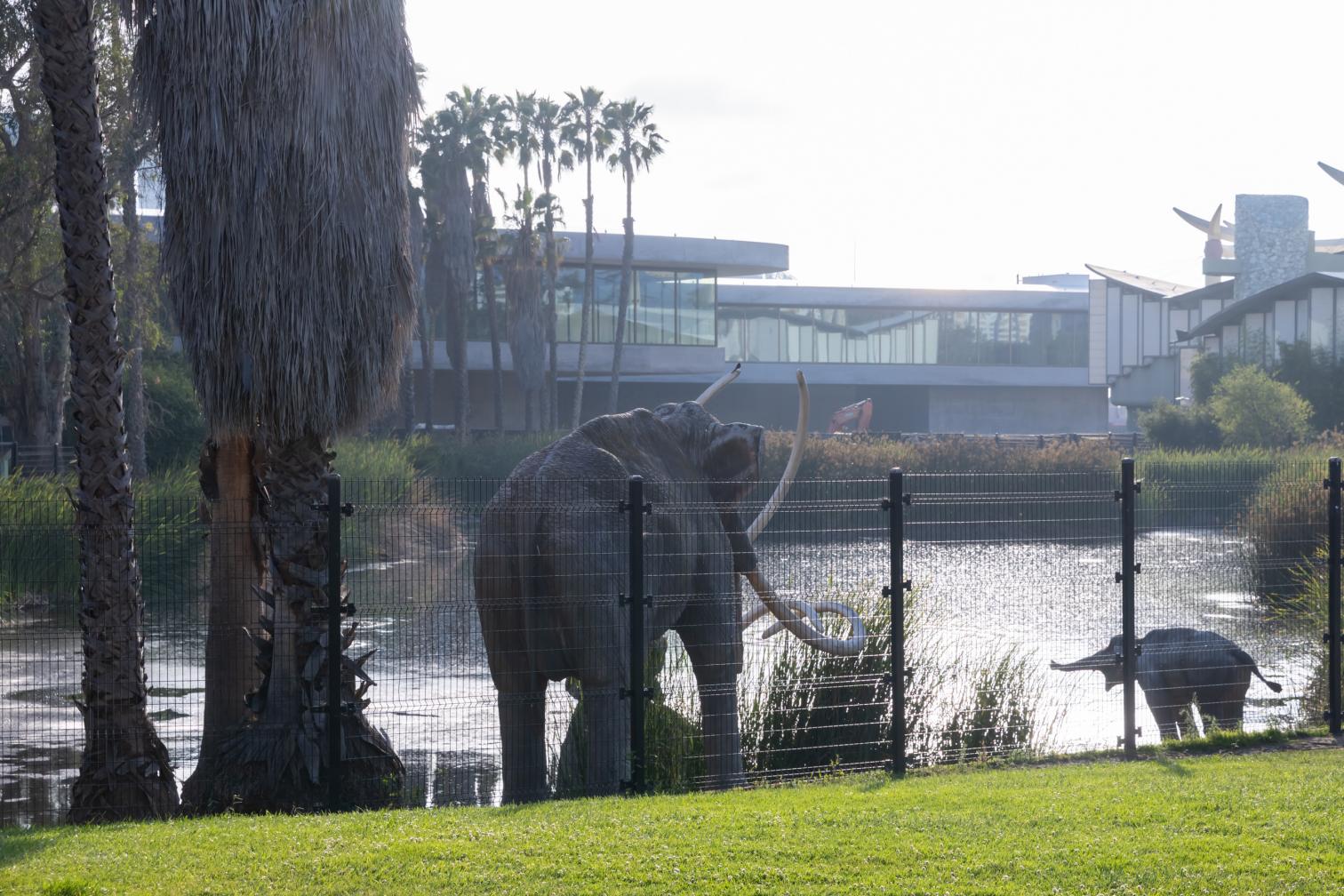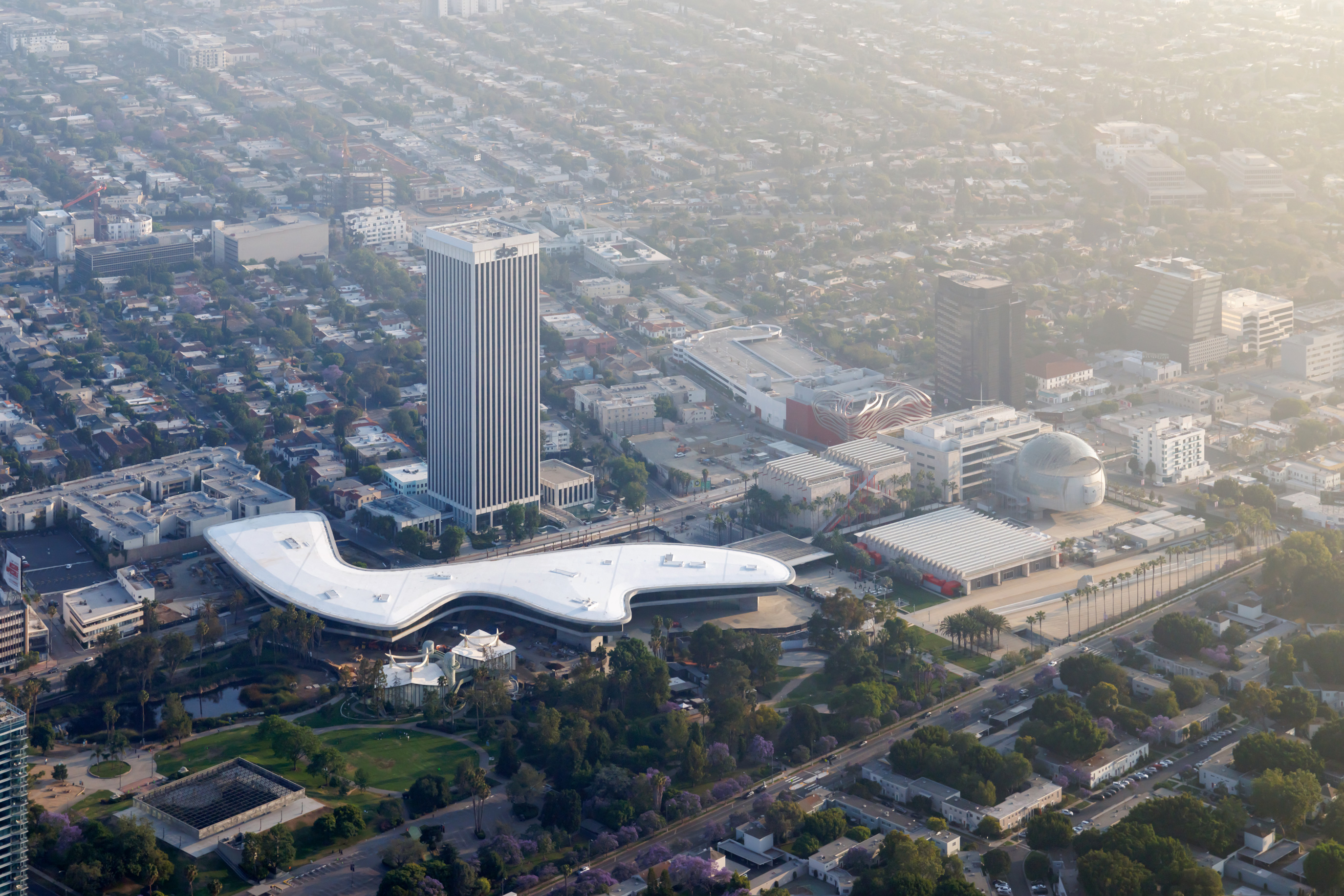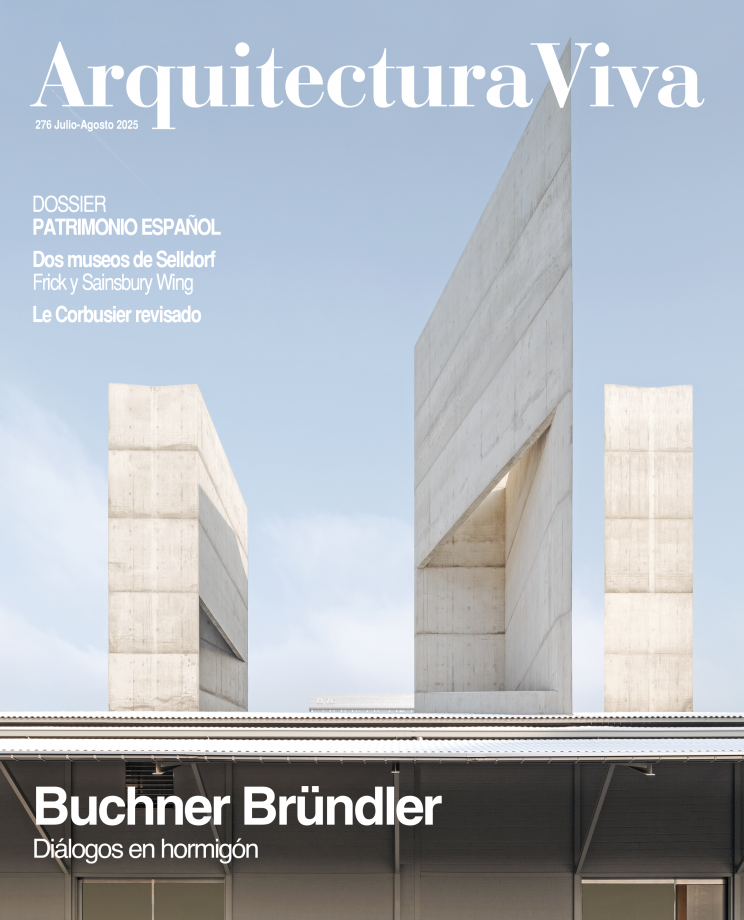LACMA’s David Geffen Galleries
Peter Zumthor SOM- Type Museum
- Date 2024
- City Los Angeles
- Country United States
- Photograph Iwan Baan

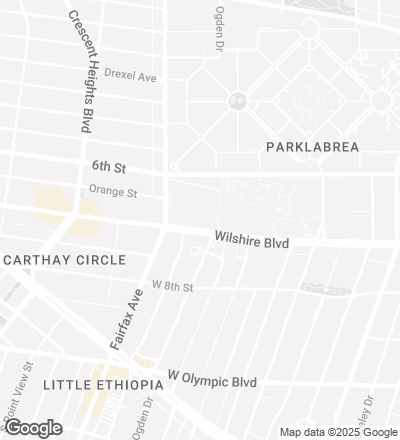
After years of planning, redesigning, and construction work, the Los Angeles County Museum of Art (LACMA) has for a few days opened the doors of its new David Geffen Galleries, a winding concrete-and-glass building by the Swiss architect Peter Zumthor, in collaboration with the firm SOM. The official opening is programmed for April 2026.
Zumthor began preliminary studies for the LACMA campus’s east sector in 2009 and presented the initial scheme for the David Geffen Galleries in 2013. The project involved demolishing several of the institution’s original structures, a process which ended in 2020. The new building will be finished at the close of 2024. Containing a total area of 32,285 square meters, it completes the existing LACMA campus, which includes two Renzo Piano works: the Broad Contemporary Art Museum and the Lynda and Stewart Resnick Exhibition Pavilion.
Elevated almost 9 meters and held up by seven structural pavilions, the building’s main volume rises on Wilshire Boulevard. LACMA sees suspending the gallery as a means of “eliminating traditional cultural hierarchies,” and presents all works of art “on the same plane” both literally and symbolically.
The design of a single level offers a continuous space for displaying art pieces, with no rigid divisions. Photographs by Iwan Baan, provided courtesy of LACMA, show interiors bathed in natural light, surrounded by a perimetral glass band and large windows in the lower pavilions.
The concrete pavilions at ground level contain public amenities like restaurants, stores, and a new theater. Two exterior staircases connect this floor to the upper exhibition level, to which the museum’s permanent collection will soon be moved, expanding LACMA’s gallery space from 12,077 to more than 20,438 square meters.
Despite setbacks and controversias, Zumthor’s project has come to fruition and promises to transform the Los Angeles museum offer with this new redefinition of LACMA’s identity.
